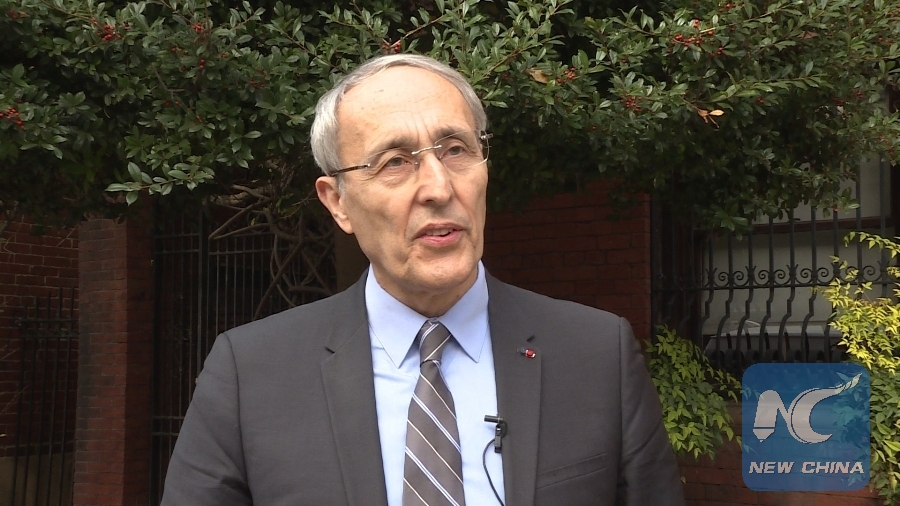
The screenshot shows International Thermonuclear Experimental Reactor Director-General Bernard Bigot speaks in an interview with Xinhua News Agency in Washington D.C., the United States, on Dec. 6, 2017. (Xinhua/Guo Yina)
WASHINGTON, Dec. 6 (Xinhua) -- Construction of the world's largest nuclear fusion experiment, the International Thermonuclear Experimental Reactor (ITER), is now 50 percent complete, head of the project said here Wednesday.
"It is quite symbolic," ITER Director-General Bernard Bigot said in an interview with Xinhua. "Now we are really completing all the milestones we have planned to pass through on time and on budget."
ITER, currently under construction in southern France, is a 10-year-old international project aimed at exploring the commercial use of fusion power, the same energy source from the Sun that gives the Earth its light and warmth.
It is jointly funded by the Europe Union, China, India, Japan, the Republic of Korea, Russia and the United States.
Unlike today's fission-based nuclear plants, which produce electricity by splitting atoms, ITER would fuse hydrogen atoms to generate power.
According to the ITER's plan, its first operational test, known as first plasma, is scheduled for 2025, followed by full power operation in 2035.
"We are now doing nearly one percent per month (in) progress -- around 0.6 to 0.7 percent, which is a very precise way in full transparency," Bigot said.
"I feel we are more and more confident now. We are well-organized ... in order to complete the 50 percent more up to the completion of the first plasma by 2025," he said.
The European Union is paying 45 percent of the cost, now estimated at about 20 billion euros (23.6 billion U.S. dollars). China, India, Japan, the Republic of Korea, Russia, and the United States each contribute nine percent equally.
Previously, problems including cost overruns have pushed back the first plasma of the project from 2020 to 2025.
The ITER chief warned that the project could face further delays if the administration of President Donald Trump is not willing to fully honor its funding commitment.
"Right now quite a large number of the ITER members agree to commit themselves before mid-2018 about the new budget. The U.S. is not being able to do that so far. They need to have some more discussions," said Bigot.
"That's why I come here in Washington now in order to meet some of the high political leaders in order to... get some support in order to have them providing their component," he said.
"If the U.S. does not provide the budget on time, we will have further delay and it will damage the project, we will not be able to complete by 2025. It's just one member that doesn't fully comply with its commitment."
Meanwhile, China's Ministry of Science and Technology announced last week it has invested 4 billion yuan (about 600 million U.S. dollars) in the ITER project in the past 10 years.
"The Chinese contribution is just great. China is highly motivated (with) full political support, and so far they have been providing all the innovative and specific components on time and on specification. So China is really an exemplary partner for ITER," Bigot said.
Fusion energy is carbon-free and environmentally sustainable, yet much more powerful than fossil fuels. A pineapple-sized amount of hydrogen offers as much fusion energy as 10,000 tons of coal, according to ITER.
When the fusion reaction is disrupted, the reactor simply shuts down - safely and without external assistance. Since tiny amounts of fuel are used, about two to three grams at a time, so there is no physical possibility of a meltdown accident, it said.
"It's clear that the way the world gets its energy supply is not sustainable," Bigot said.
"We absolutely need to have alternate innovative technology in order to have a massive, predictable, continuous world energy supply. It (fusion power) is complementary of the new energy, which as you know is intermittent and diffuse."

